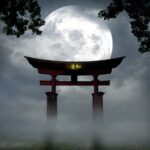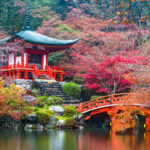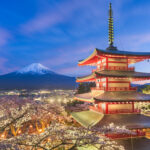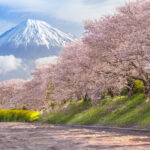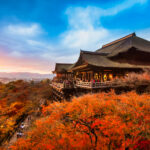The most well-known of the many dance festivals hosted around Japan during the Obon season in mid-August is the Awa Odori in Tokushima.
Let’s explain the name first…
Tokushima Prefecture was formerly known as Awa, and Odori is Japanese for dance.
This 400-year-old “Fool’s Dance” in Tokushima attracts hundreds of spectators and performers from around Japan and the world.
“Fools dance, and fools watch; if both are fools, you might as well dance.”
Awa Odori sees lots of street dancing during the evenings
While some events occur during the day, the primary spectacle occurs in the evenings between 18:00 and 22:30.
This is when groups of dancers, known as “ren,” perform in the streets of downtown Tokushima that have been closed off.
The ren originates from Tokushima, as well as other regions of Japan, and as far away as the U.S., and range from amateurs put together just a few days before the event to veterans who practice year-round.
The groups move in a procession while dancing and playing traditional musical instruments through designated viewing zones (enbujo).
Even if the dance moves are straightforward, Ren sets themselves apart with challenging variations and vivid costumes.
Men wear happi, while women wear cotton robes known as yukata. These requirements differ from group to group, just like the dance.
Tokushima’s city center becomes a dance stage
Tokushima’s city center is transformed into a sizable dance stage when it shuts down in the evening. There are a variety of outdoor performance spaces with either complimentary or fee-based seating.
Professional groups will undoubtedly put on a show on the paying stages, but there will also be more casual dancers at the free ones. Outside the stage areas, there are additional dance opportunities and typical festival attractions like food and gaming booths.
How do you get tickets for the Awa Odori performances and events?
From around the start of July, customers can purchase tickets for the paid stage sections at any 7-Eleven convenience store. They cost between 1200 and 2200 yen for a block of performances that lasts 90 minutes. The first block from 18:00 to 19:30 or the second block from 20:30 to 22:00. Same-day tickets are available for an extra 200 yen if there are still open seats.
How to get to Awa Odori
Via air
Tokushima Airport is home to JAL and ANA, providing direct flights from the city to Fukuoka, Sapporo, and Tokyo’s Haneda Airport.
For the Tokyo route, the regular one-way fee is approximately 40,000 yen, but discounted tickets can be found for 10,000–20,000 yen.
The majority of discounts, though, are not offered during the Awa Odori.
Heading there via bus
Leaving from Tokyo
Several different operators provide an overnight bus service from Tokyo to Tokushima.
Depending on the firm and the date of travel, the one-way trip takes about nine hours and costs between 6,000 and 11,500 yen.
Leaving from Osaka
Osaka (OCAT bus terminal, Nankai bus terminal in Namba, Hankyu Sanbancho bus terminals, and JR Highway Bus close to Osaka Station) and Tokushima Station connect by frequent daytime highway buses.
It takes about 2.5 hours and costs 3800 yen to travel one way.
Taking the train
Take the Tokaido/Sanyo Shinkansen to Okayama from Tokyo or Osaka. To go to Takamatsu, you must change to a quick train in Okayama. Both local and limited express trains run the entire distance to Tokushima from Takamatsu.
The cost and travel time from Tokyo is approximately 19,000 yen one way, and the one-way fare from Osaka is roughly 10,000 yen. The trip takes two to three hours. The Japan Rail Pass covers the entire trip, but pass users must take Hikari or Sakura trains along the Tokaido/Sanyo Shinkansen rather than Nozomi or Mizuho.
Make sure you book a hotel early
As Tokushima City hotels sell out months in advance, travelers hoping to visit Awa Odori may have trouble getting a room. The surrounding Naruto (40 minutes by train), Takamatsu (1 hour by train), or even Osaka (2.5 hours by car) are popular choices for fans who want to stay elsewhere.
There’s a museum for those who miss Awa Odori during their travels
The Awa Odori Kaikan has a museum about the Awa Odori for visitors to Tokushima who could not attend the festival. Moreover, a dance hall where multiple daily dance performances are hosted can be found there. Keep in mind that the Awa Odori Kaikan is housed in the same structure as the bottom station of the ropeway that ascends Mount Bizan.
Make the most of this majestic dance festival in Japan
Every August, well over a million people gather in the streets of Tokushima City to see or take part in this traditional folk dance, the Awa Odori, Tokushima’s most well-known event, draws attention from all over the country.
- Writing & Understanding Haiku Poetry - May 25, 2023
- Shinkansen Bento: A Guide to the Delicious Train Station Box Lunches - May 25, 2023
- What is Takoyaki? - May 25, 2023

